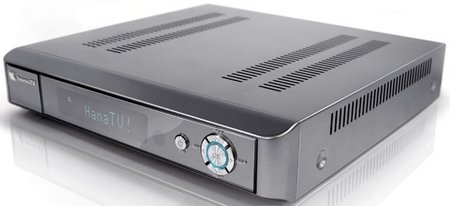UWB ready for blast-off at last?
Mar 10, 2008 — by Eric Brown — from the LinuxDevices Archive — 2 viewsAfter overestimating the early market for ultra-wideband (UWB) in 2006, ABI Research now says the short-range wireless networking technology is finally ready for take-off. Shipments of UWB in laptops, periphals, consumer electronics devices, and eventually mobile handsets will reach 400 million by 2013, forecasts ABI.
UWB shipments in 2007 were limited to only 40,000 units, ABI said, in part due to delays caused by a standards war. Senior analyst Douglas McEuen explained that there's been “a shakeout from three competing flavors of the technology to one.”
Now that an official standard has been ratified, the UWB market could hit a million units this year, says ABI, with North America leading the market. Early implementations will be deployed in laptops and computer peripherals, where the technology will help reduce USB cable clutter while supporting large multimedia file transfers. Lowering of costs will bring an eventual migration to digital cameras and camcorders, HDTVs, portable music devices, and eventually, mobile handsets.
Stated McEuen, “Real market acceleration will only occur when UWB debuts in mobile handsets, where it will be used — possibly bundled with Bluetooth — to transfer music, pictures and video files. Even a small handset market penetration will deliver huge numbers.”
UWB was designed as a low-power, broadband USB-replacement and home media networking technology designed for optimum use at ranges of less than 10 meters (about 33 feet). Using a wide band of the radio frequency spectrum and pulsed data delivery, UWB can transmit a much larger amount data, compared to WiFi, Bluetooth, or wireless USB (WUSB). Actual UWB speeds will depend on the implementation, but the technology has been demonstrated at very short range at bandwidths of up to 256Mbps, with theoretically possible speeds up to 480Mbps, matching the maximum rate of wired hi-speed USB 2.0. Meanwhile, of course, USB 3.0 is fast-approaching, promising up to ten times greater bandwidth.
Some early UWB modules have been made available with select Lenovo, Dell, and Toshiba PCs and notebooks, but “true silicon integration will take more time,” says the study. Meanwhile, it says “hub and dongle” UWB configurations are already appearing that will enable users to retrofit PCs and peripherals.

UWB-equipped set-top box from Celrun
(Click for details)
In January 2007, Sigma Designs released a Linux-compatible Mini-PCI Windeo Reference Design Kit based on its Windeo UWB chipset (see below). In March of that year, Sigma joined with Japanese IP set-top box (STB) specialist Celrun to demonstrate the Celrun 900H (pictured above) a Linux-based STB based on the Windeo design.

Sigma's Windeo UWB chipset
(Click to enlarge)
Availability
More details about ABI's “Ultra-Wideband Connectivity” study and report may be available here.
This article was originally published on LinuxDevices.com and has been donated to the open source community by QuinStreet Inc. Please visit LinuxToday.com for up-to-date news and articles about Linux and open source.